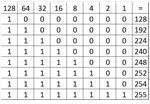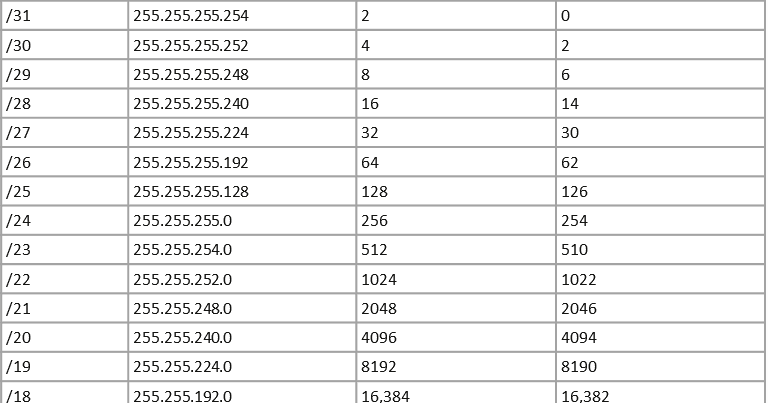
If the result of this bitwise AND operation and the lowest network IP address are the same, the router knows that the packet must be routed to a host on the supernet. Now, when the router for the new supernet receives an incoming packet, the new supernet mask is applied to the destination IP address, and a bitwise AND operation is performed. This new supernetwork can now accommodate 2 10, or 1024 hosts. Example A shows how this is done.Ĭreate a new supernetwork by combining four separate subnetworks. When a subnetwork is created, we first create the subnet mask by changing some of the 0s in the Hostid section to 1s.įor example, to create four separate subnetworks from one Class C network, we would simply add two bits (2 2 = 4) to the default subnet mask.

The 1s in the mask represent the network ID (Netid) section of the address, and the 0s represent the host ID (Hostid) section.

The default subnet mask for Class C networks is 255.255.255.0. Class C supernetworks will usually assume the address of the subnetwork with the lowest IP address, in this case, 192.168.64.0.īefore I discuss creating a supernetwork mask, I should cover some points about the regular Class C subnet mask. These four smaller networks have been combined to create the 192.168.64.0 supernetwork. With supernetting you can combine small networks into one larger network.įigure A shows IP addresses within the following Class C subnetworks: The addresses may be combined to create one supernetwork.įigure A shows how four separate Class C networks may be combined to create one large supernetwork.The addresses may be subnetted to create more than four subnetworks.The address block may be used to create four separate Class C networks.TechRepublic can now employ these addresses using one of the following three options: There are no Class A or Class B addresses available, so TechRepublic applies for and receives a block of four Class C addresses. In this example, TechRepublic needs IP addresses for 1,000 hosts. Let’s take a look at a typical networking problem for a medium-size organization.

In this article, I will cover the procedures involved in creating a supernetwork. To create a supernetwork, or supernet, an organization uses a block of IP addresses assigned to several Class C networks to create one large network. One solution to this problem is supernetting. The problem is compounded by the fact that Class C networks are limited to a maximum of 254 hosts. Most Class A or B network addresses have already been assigned. In this Daily Feature, Jim McIntyre shows you how.Īs the Internet has grown, it has become more difficult for organizations to obtain Class A or Class B addresses for their networks. If you have more than one Class C network and you need more hosts, you might want to try to supernet your Class C networks to create one large network.


 0 kommentar(er)
0 kommentar(er)
